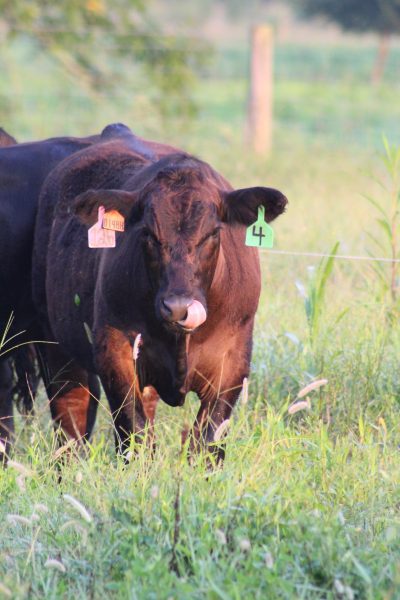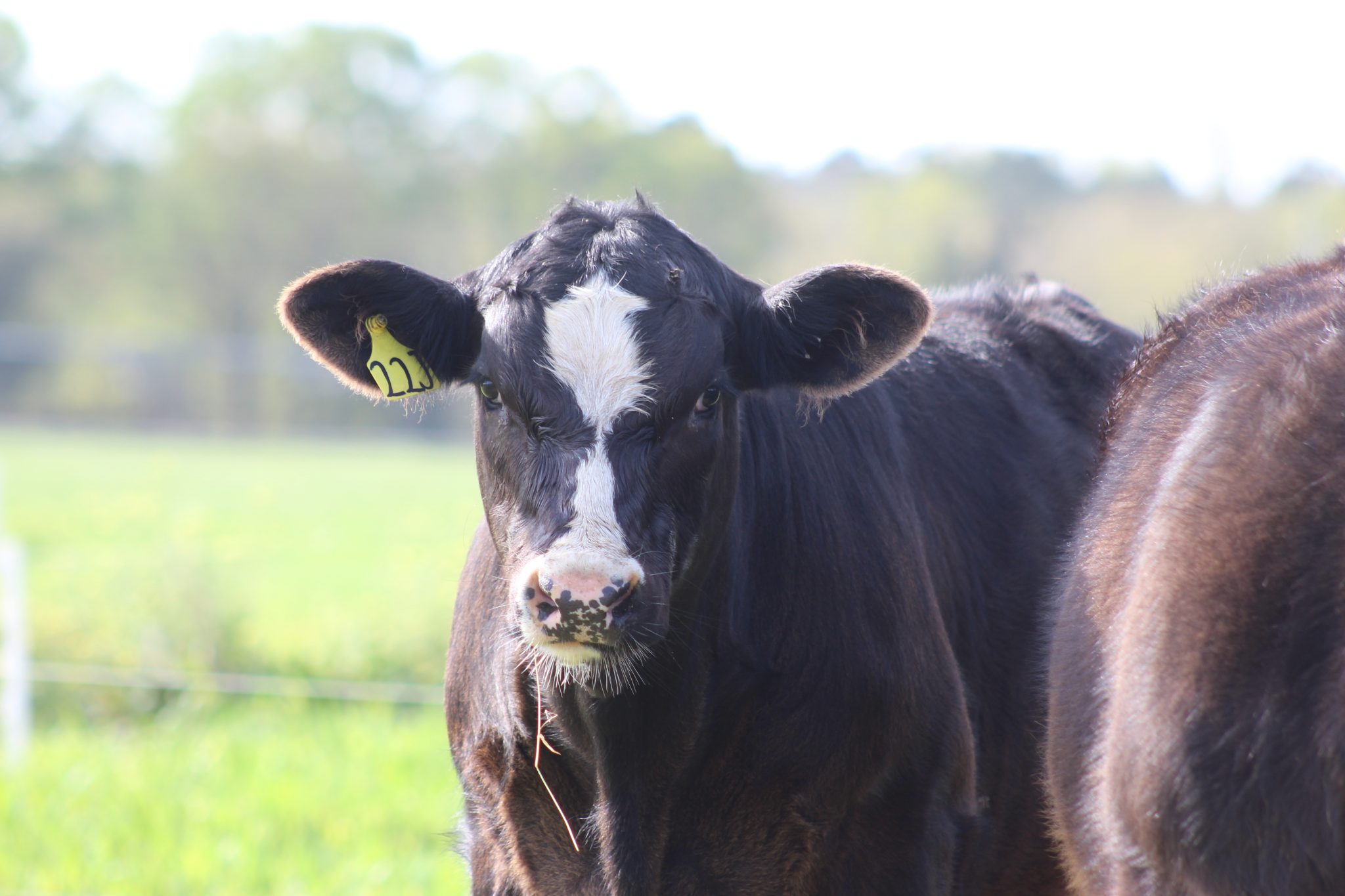Beef

Growth-promoting implants have been used to enhance beef production since their commercial introduction in 1957. They are designed for the slow release of natural and synthetic compounds, contained as a powder in a small pellet, to help promote the production of muscle tissue. In all phases of beef production, implants have been shown to increase body weight and rate of gain for cattle. This could increase the economic value of the animal.
Implant Use in Beef Cattle
 Implants are approved for use in nursing calves, stockers, and feedlot animals. They are not cleared for use in cull cows, dairy cattle, breeding animals, and veal calves. Typically, implants are placed under the skin on the back of the ear. Proper management practices with implants are imperative for optimal response to growth-promoting techniques. Please refer to ANR-1281, “Alabama Beef Quality Assurance: Implanting Cattle Properly” available on the Alabama Extension website at www.aces.edu for application instructions. Once placed under the skin, the pellet slowly releases the active ingredient over time. Current implants have a use of 80 to 200 days, depending on the active ingredients.
Implants are approved for use in nursing calves, stockers, and feedlot animals. They are not cleared for use in cull cows, dairy cattle, breeding animals, and veal calves. Typically, implants are placed under the skin on the back of the ear. Proper management practices with implants are imperative for optimal response to growth-promoting techniques. Please refer to ANR-1281, “Alabama Beef Quality Assurance: Implanting Cattle Properly” available on the Alabama Extension website at www.aces.edu for application instructions. Once placed under the skin, the pellet slowly releases the active ingredient over time. Current implants have a use of 80 to 200 days, depending on the active ingredients.
Implants are used in more than 90 percent of feedlot cattle, while fewer than 50 percent of cow-calf operations use this growth-promoting technology. Implant technology is underused in the cow-calf sector but may be a cost-effective method to increase the muscle tissue production of calves. Using implants with nursing calves can be beneficial by increasing gain rate and improving overall feed efficiency before weaning. Implants that are approved for calves can be given starting at 30 to 45 days of age. Studies have demonstrated that with the use of implants, calves have improved gains by 4 to 6 percent compared to nonimplanted calves. Implanting calves as soon as it is practical to do so is recommended. Depending on the implant selected, a second implant before weaning may help to increase total production.
Implanting stocker calves can also be beneficial to operations. Studies have reported increases in stocker calf average daily gain by 10 to 20 percent when implanted. Several implant options are available for stocker calves. They range in effectiveness duration averaging about 80 to 120 days of payout. Re-implanting is likely economical. When adding implants to a program, improved nutritional support should also be a significant consideration. Ensuring that stockers have adequate energy and protein will help support the improved growth potential associated with implant usage.
Types of Implants
Most implants have combinations of hormone analogues, while some have only singular hormone activity. The active ingredients used in implants can be classified as either estrogenic or androgenic. Estrogenic compounds include estradiol benzoate and estradiol 17-beta, which are naturally occurring and zeranol, a synthetic estrogen compound. Synthetic progesterone is also used in implants as an estrogenic compound. These compounds mimic the effects of the naturally occurring hormone estrogen. Androgenic compounds include testosterone propionate and trenbolone acetate (TBA). The androgenic compounds mimic the activity of naturally occurring testosterone.
Potential Side Effects
Implants can have a range of side effects, which can occur when improper implanting techniques are used. Abscesses can result from infected implant sites if proper techniques are not used when administering the implant. Other issues can include increased occurrence of rectal or vaginal prolapses and buller steer syndrome. Effects on quality grade and palatability in the product have also been observed. These side effects are rare, but with a responsible and strategic implanting program, producers can make the best use of implants while maintaining quality end products.
Safety
In recent years, there has been much concern about using growth-promoting hormones in beef production. Beef from implanted cattle have very low levels of estrogenic activity when compared to nonimplanted beef and other common foods (table 1). In addition, the daily production of estrogen in the human body is much higher than the potential amount of estrogen consumed in a serving of beef (table 2). The United States Food and Drug Administration (FDA) regulates all use of growth-promoting implants and requires no withdrawal period before harvest of implanted cattle.
Table 1. Estrogenic Activity of Common Foods
Adapted from Preston, 1997
| Food | Estrogenic Activity, Nanograms/Pound of Food |
|---|---|
| Soybean oil | 908,000 |
| Eggs | 15,890 |
| Cabbage | 10,896 |
| Beef from implanted cattle | 10 |
| Beef from nonimplanted cattle | 7 |
Table 2. Estrogen Produced in People and Implanted Cattle
Adapted from Preston, 1997
| Item | Estrogenic Produced, Nanograms/Day |
|---|---|
| Pregnant woman | 90,000,000 |
| Nonpregnant woman | 5,000,000 |
| Adult man | 100,000 |
| Prepubertal children | 40,000 |
| 3 ounces beef from implanted cattle | 1.9 |
Summary
Implants have an important role in beef cattle production and are a management tool worth considering for improving calf, stocker, and feedlot cattle performance. Implants can be an effective and efficient way to increase muscle tissue production, but proper implanting techniques must be used to ensure the safety and well-being of the cattle. Different implant types and products are available for use depending on the operation’s goals and the cattle production stage. For additional information on this topic, consult the Alabama Cooperative Extension website (www.aces.edu) or Animal Science Regional Extension Agent.
Resources
Preston, R. (1997) Rationale for the Safety of Implants. Proceedings: Impact of Implants on Performance and Carcass Value of Beef Cattle. Oklahoma State University, P-957. Pg 199.
 Maggie Justice, Graduate Student, Kim Mullenix, Extension Specialist, Associate Professor, Soren Rodning, Extension Veterinarian, and Alex Tigue, Graduate Student, all in Animal Science; and Jason Sawyer, Associate Professor, Meat Science, all with Auburn University
Maggie Justice, Graduate Student, Kim Mullenix, Extension Specialist, Associate Professor, Soren Rodning, Extension Veterinarian, and Alex Tigue, Graduate Student, all in Animal Science; and Jason Sawyer, Associate Professor, Meat Science, all with Auburn University
New April 2023, Implants & Their Use In Beef Cow-Calf Operations, ANR-2989

